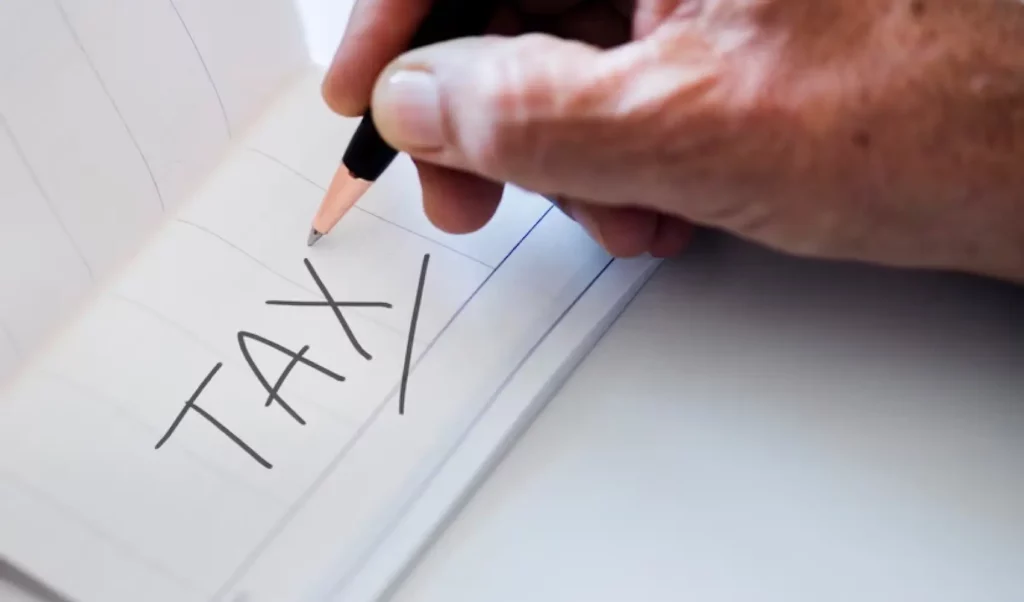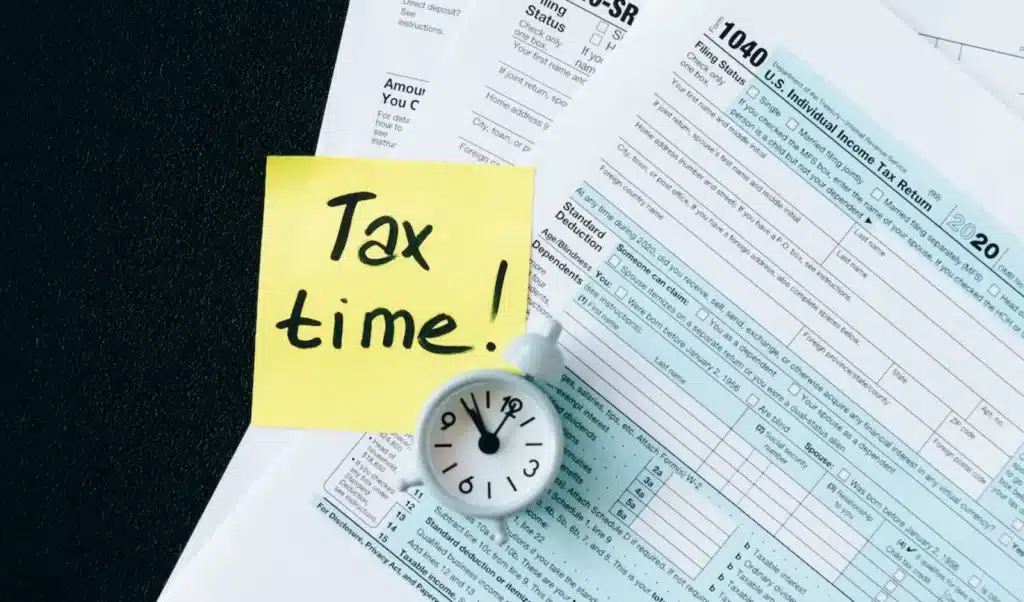If you’re going through financial struggles, bankruptcy can sound like a lifeline. The idea of having all the debt washed away and finally putting an end to the credit collector calls is a dream come true.
Unfortunately, filing for bankruptcy comes at a cost, and it’s even more complex when tax debt is involved. The relationship between tax debt and bankruptcy is complicated, and it comes with strict rules. If you’re considering bankruptcy for tax relief, read on to understand what debts are possible to eliminate in this process and what the conditions are. Or contact our law offices for help today.
Key Takeaways
- A discharge is a court order that absolves you from your outstanding debt after you’ve met bankruptcy terms.
- It means you’re no longer responsible for the debt, and creditors can’t come after you.
- You can only discharge tax debt that you have a personal liability for, and it has to be at least 3 years old.
- You can’t get unfiled tax returns discharged regardless of how old they are.
- After filing for bankruptcy, you still have to pay the unpaid taxes that weren’t discharged.
- You can explore alternatives to bankruptcy, such as CNC, OIC, or an IRS installment agreement.
When Tax Debts Can Be Discharged
Even if you have debts that qualify to be discharged in bankruptcy, it doesn’t mean all your tax debt will be wiped away. Every tax return and tax year is considered separately. This means even if you file bankruptcy, you might still be liable for some tax debt after your case is complete.
In general, your income tax debt has to meet the following requirements to be eligible for bankruptcy:
- The three-year rule. Your tax debt must be related to a tax return due at least three years before filing for bankruptcy. For example, if your tax return was due on April 15, 2023, you can’t have the tax debt discharged in a bankruptcy filed before April 15, 2026. Any recent tax obligations are still your liabilities even after bankruptcy.
- The two-year rule. Your tax debt must have been filed at least two years before the bankruptcy petition. This is one of the many reasons why you should always file your returns even when you can’t make payments.
- The 240-day rule. The IRS has to have assessed your tax debt at least 240 days before you file for bankruptcy. If the IRS audits your return and finds additional taxes, the 240-day period restarts.
Understanding Bankruptcy Types and How Tax Debts Fit In
The first step of successfully filing for bankruptcy is understanding the different types of bankruptcies. To protect your interests, consult with an experienced bankruptcy attorney who can provide a customized evaluation on the best kind of bankruptcy for you.
The right option depends on your financial status and whether you’re filing as a business or an individual. Here are some of the common types of bankruptcies:
Chapter 7: Liquidation
Chapter 7 bankruptcy, commonly known as liquidation under the bankruptcy code, is suitable if you are unable to make monthly or regular payments towards your debts. Businesses choosing to terminate operations can also file for Chapter 7.
The IRS appoints a trustee to convert your non-exempt assets into cash and distribute the money to your creditors. Then, the courts discharge any remaining debt unless it’s exempt, which is often the case with tax debt. In most cases, with Chapter 7, you keep your property, and most of your unsecured debt is discharged.
Again, the income taxes have to meet the 3-2-240 rule to be discharged, and after the bankruptcy case, you’ll have to cover any tax you owe that isn’t discharged.
Chapter 13: Repayment Plan
Chapter 13 bankruptcy can be a great strategy in dealing with tax debt if you have a regular wage, you’re self-employed, a sole proprietor, or a business owner.
Unlike Chapter 7 bankruptcy, which helps wipe out debt, Chapter 13 helps reorganize your debt and repay creditors over a three to five-year term. Although not all debt is wiped out, the repayment plan can pause interest on some penalties and tax debts, which can provide temporary relief.
When you file for Chapter 13 bankruptcy, your tax debt is divided into two categories:
- Non-priority tax debt: This is the tax debt that meets the 3-2-240 rules that can be discharged. This debt is treated as an unsecured debt, so it may end up being discharged at the end of the repayment period.
- Priority tax debt: This is recent tax and/or taxes that can’t be exempted, such as trust fund taxes, excise taxes, and penalties such as Trust Fund Recovery Penalties (TFRP). These taxes must be paid during the bankruptcy repayment plan.
Chapter 11: Large Reorganization
Chapter 11 is commonly used by businesses, but you can also file for it as an individual if your debts exceed the limits under Chapter 13. This type of bankruptcy is only suitable if you’re a high-income earner with significant debts, since it’s very complex and expensive.
In relation to tax debt, Chapter 11 bankruptcy doesn’t discharge it. Your tax liabilities and any tax debt you owe remain your responsibility. This bankruptcy simply allows you more time to repay your tax debt. The IRS is considered one of your creditors in this case, so you’re expected to pay the tax you owe. If your business continues running after filing for bankruptcy, you’ll still be required to pay taxes on the income you earn after filing for bankruptcy.
You can get some taxes discharged under Chapter 11, but the rules are so complicated. For instance, taxes can only be discharged if they’re income taxes, and they have to be at least three years old. Courts also rule differently based on the reason behind the non-payment and the type of tax. Due to all these complexities, it’s best to talk to a bankruptcy lawyer before filing for Chapter 11.
Chapter 12: Family Farmers & Fishermen
This bankruptcy code is for family farmers or fishermen. Chapter 12 allows debtors to propose and carry on a repayment plan to pay the creditors in installments for three to five years. This bankruptcy code works perfectly for fishermen and farmers since it takes into account the seasonal nature of the business and it’s very inexpensive.
In Chapter 12, the tax debt is classified as a priority liability, meaning it has to be paid first. For example, if you have credit cards and unpaid taxes, you’ve got to pay the taxes you owe first. When creating a repayment plan, the court will use all your disposable income to pay your taxes.
If you have insufficient funds to pay the entire tax debt, the rest can be discharged, but again, it generally must meet the 3-2-240 rule. In most cases, capital gains from selling farm assets are considered lower priority, so those taxes might end up being discharged by the end of the bankruptcy period.
Tax Debts That Bankruptcy Can’t Fix
When filing for bankruptcy, not all tax debts are eliminated. Here are some types of tax debts that can’t be discharged:
- Trust fund taxes (eg, payroll taxes): These involve taxes you withhold from an employee’s paycheck as a business owner, including social security, federal income tax, and Medicare. The IRS considers this employee’s money and not the employer’s, so it can’t be erased.
- Property taxes: Older property taxes might be dischargeable, but property taxes that are not over one year old before filing are considered secured debts, so they can’t be eliminated. Property tax liens can’t be discharged, either, so if your property taxes have been converted into a tax lien, they can’t be discharged until you sell the house and the money pays the tax liens.
- Taxes from unfiled returns: If you fail to file a tax return, the IRS files a substitute for return (SFR) on your behalf. SFR isn’t dischargeable even in the case of a bankruptcy.
- Evasive or fraudulent tax: If your tax debt is a result of an attempt to evade tax, eg, by submitting false information knowingly or hiding some assets or incomes, it can never be discharged.
- Tax penalties and non-dischargeable interests: Even if your original tax debt is dischargeable, you still have to pay fines and interest from non-dischargeable taxes, such as recent taxes and payroll after bankruptcy.
- Custom duties and tariffs: Recent customs duties remain after bankruptcy and can’t be discharged.
There are additional rules that you should keep in mind as well. For instance, although you can discharge most credit card debt in bankruptcy, you will not be able to discharge credit card debt if the debt is from paying taxes that didn’t meet the 3-2-240 rule.
Business Tax Debts in Bankruptcy: Who’s Liable?
Filing for bankruptcy can help discharge some tax debt. However, there are exceptions for certain types of taxes, such as trust fund taxes (e.g., taxes withheld from employees’ paychecks or sales tax collected from customers).
When a business files for bankruptcy, the IRS has the right to hold certain individuals responsible for the taxes that can’t be discharged. Most states also have rules that allow their revenue agencies to hold individuals personally responsible for a business’s unpaid sales tax. Generally, to be considered a responsible person, you must have made the decision not to pay the tax, and you must have acted willfully. This may include business owners, partners, and shareholders, but it can also include employees.








